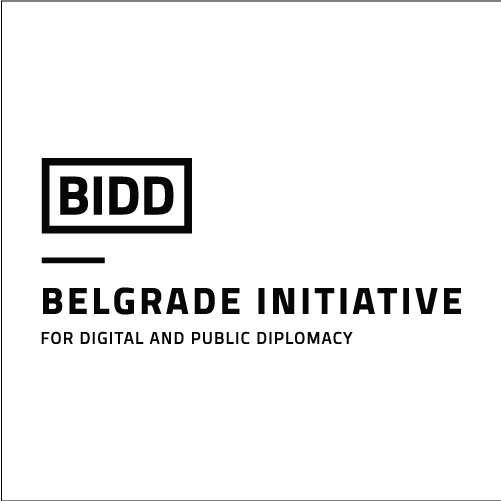 This undated screen capture of an Islamic State propaganda video sees a masked jihadi standing before a computer generated map of IS territorial control. (Source: Counter Jihad Report)
This undated screen capture of an Islamic State propaganda video sees a masked jihadi standing before a computer generated map of IS territorial control. (Source: Counter Jihad Report) The Islamic State’s “A Message to America,” showing American journalist James Foley’s final moments, is vile and horrifying. Significantly, unlike the early propaganda of Al Qaeda, this video is also professionally cut and edited. It is the sort of thing engineered to achieve rapid, viral spread on the open internet. It also represents the main weapon the Islamic State is increasingly employing to great effect against the West.
The video exploded like a shotgun blast across social media following its August 19 release. Within hours, it was the subject of reports on virtually every news outlet. White House National Security Council spokeswoman Caitlin Hayden confirmed that administration officials had seen the video; President Obama was privately briefed that evening and gave a nationally televised statement the following afternoon. The speed and global reach of Foley’s execution is the latest example of the Islamic State’s horrifying propaganda apparatus.
The Islamic State has mastered the use of social media as a weapon of war. It has done so by keeping its message and objectives consistently simple: fear. It is a viral campaign of beheadings and crucifixions, mass executions and public burnings. As U.S. air strikes against IS continue to escalate, this communications apparatus will turn increasingly toward U.S. citizens. Accordingly, Americans must be ready to both understand and counteract it.
A Machine of Horrors
Although the overarching message is fear, the Islamic State’s propaganda machine has two distinct functions. In the jihadist organization’s aggressive territorial expansion, its social media postings have served a role once filled by leaflets air-dropped ahead of invading armies, sowing terror, disunion, and defection. Meanwhile, its messaging to the wider global community, however gruesome to many viewers, serves largely to bind the militants of the Islamic State more tightly together—and rally more sympathetic Westerners to its cause. Both these functions rely almost exclusively on media platforms that were nonexistent a decade ago.
Social media has proven a powerful tool in the Islamic State’s military offensives. When IS advanced on Mosul beginning June 10, the Iraqi army collapsed immediately. An estimated 60,000 officers and soldiers fled in the first day of fighting. As IS has pushed both south and eastward, threatening to both encircle Baghdad and crush the semiautonomous Kurds, the rout has accelerated. More than 200,000 Iraqi minorities escaped ahead of IS’ early August offensive, abandoning their towns en masse. In total, some 500,000 civilians are thought to have sought refuge in Kurdish-controlled lands.
While it is doubtful that more than a fraction of Iraq’s fleeing soldiers and civilians have seen the Islamic State’s postings, it only takes a small handful for the rumors to take hold. As Ali Hashem argues in Al- Monitor, “[The] Islamic State’s media strategy, through its online social media posts and publications, highlights the group’s intention to scare all its enemies, a strategy that aims at defeating the opponent without shooting a bullet…the fabrication of horror stories about its activities win IS further ground.”
In communities close to the front lines, residents have been poised on pins and needles—it does not take much to push them over the edge. George Packer, writing in the New Yorker, tells a remarkable story of the fear that swept through Sinjar as word of the IS offensive spread, precipitating the mass exodus of the Yazidi population. Indeed, as Islamic State forces pushed past Mosul in June, the Iraqi government took the unusual step of banning social media. The rationale was simple: while Iraq could not disrupt IS communications, it could try to diffuse the effect of the Islamic State’s propaganda upon its own citizens.
There is evidence that IS choreographed this social media strategy before its Iraqi offensive even began. In an historical first, the Islamic State even released an Arab-language Twitter app, intended to hijack user accounts and twist Twitter’s algorithms to its advantage. As IS roared toward Baghdad, a series of coordinated hashtag campaigns grabbed repeatedly for global attention. As author and social media analyst J.M. Berger noted, “This is a combination of an extremely ambitious military campaign with an extremely ambitious PR campaign. Social media is most of that PR campaign.”
Although IS’ military campaign has been directed almost exclusively against the Arab world, its media arm has faced no such restriction. With the commencement of limited U.S. airstrikes against IS targets on August 8, a hashtag war broke out between Americans and English-speaking jihadists. It was a mix of sinister and surreal: pictures of the 9/11 attacks and dead American soldiers bombarded Twitter, countered by images of Apache helicopters and bald eagles.
Most alarming has been a photograph that appears to show the IS insignia in front of the White House, playing on the Islamic State’s pledge to see its flag waving in Washington, DC. Both official and unofficial IS spokesmen have continued to engage with Americans via social media in the last month, tying their messages to unrelated events like the death of Robin Williams and the Ferguson, Missouri protests. As Twitter and YouTube censors have become more sophisticated at blocking IS content, the organization has adapted accordingly.
If social media has enabled the Islamic State to broadcast freely to the wider world, however, the jihadi organization has shown a remarkable level of control when it comes to extending access to foreign journalists. Beyond an anonymous reporter with the New York Times and a Vice News videojournalist, IS has quite deliberately limited its interaction with foreign news outlets. In many cases, the attention-grabbing photographs that appear alongside the latest news from Iraq and Syria have been provided to newspapers and magazines by the Islamic State itself. The absence of certifiable journalism has pivoted additional attention toward the organization’s frequent Twitter postings and proclamations. This works even more to the Islamic State’s strategic advantage.
“Calculated Madness”
There are two observations to draw from IS’ media presence. The first is that the individuals guiding the propaganda operations of the Islamic State have a highly sophisticated understanding of social media dynamics—better than many Western governments. Although the origins of IS are complicated to say the least, its modern identity has been largely forged by the ongoing Syrian civil war. This is a conflict in which Twitter, Instagram, and YouTube have become the principle platforms of jihadi recruitment, coordination, and even training. For a time, Syrian rebels made a practice of establishing media centers in practically every new captured neighborhood. As the Islamic State expands, these lessons have been internalized.
It would be absurd to expect that IS leadership has a firm grasp on the terror organization’s evolving constellation of social media accounts—but it also doesn’t have to. So long as the purpose of the Islamic State’s communications remains the cultivation of fear, it will be nearly impossible for its proxies, sympathizers, and quasi-spokesmen to veer off message. In this way, IS stands to avoid the messaging pitfalls that have befallen similarly organized networks like the hacking collective Anonymous. In the case of Anonymous, a threat or posting too extreme has risked alienating its members and supporters. The Islamic State faces no such constraints, as they are actively recruiting those who find such gruesome tactics appealing. Those “fence sitters” who might be repulsed are not their target audience.
This leads to a second, related observation: the messaging tactics that have served IS so well in its surging offensive across Iraq have also made it exponentially harder for the organization to ever shift course. Although IS has established a “caliphate” and intends to govern, the administration of an effective state requires consensus-building and even a degree of diplomatic tact. Such traits are fundamentally at odds with the language of fear and intimidation that has so far terrorized those living in the Islamic State’s shadow. Even if IS leaders did attempt to moderate their rhetoric in an effort to consolidate existing gains, how could they begin to rein in the vast social media network that now claims to speak for the organization?
Moreover, just as the Internet grants the Islamic State a global mouthpiece for its horrifying images, it also renders every last one of them permanent. It has become a truism that nothing recorded on social media can ever be deleted or forgotten—this certainly extends to the IS affiliates who currently trumpet images of mass atrocity in the name of the cause. The militants who upload these photographs are effectively signing a pledge that can never be broken; the twenty-first century version of a gang initiation, performed before an audience of millions.
This is the “calculated madness” of the Islamic State’s recruitment and retention strategy. With each new crime recorded and amplified by social media, IS digs a deeper hole. As Mike Breen has argued, the logic of this propaganda campaign ensures that each jihadi must fight to the bitter end.
It will be a significant point to remember, as Western fears of IS continue to grow, that the Islamic State’s terrifying online presence is not matched by its actual capabilities. IS remains beset on every front. Despite claims to the contrary, it also does not begin to speak for the majority of Sunnis. In many cases, the Islamic State’s message has resonated so strongly not because of its actual power and prestige, but rather because of its smart use of the social media loudspeaker. A smart first step toward combating the Islamic State, therefore, may simply be tuning out.
In the longer term, however, U.S. policymakers must understand that the rules that govern communications in the midst of conflict are very swiftly beginning to change. The ways messages go viral or social networks interact—once chiefly the concern of commercial marketers and data scientists—now stand to exert a heavy influence on the way wars are fought and won. It is a bizarre mix of ancient ways and twenty-first century means. It is also here to stay.
By Emerson Brooking
Emerson Brooking is aresearch associate for defense policy at the Council on Foreign Relations.
by Guest Blogger for Janine Davidson
August 21, 2014
http://blogs.cfr.org/davidson/2014/08/21/the-isis-propaganda-machine-is-horrifying-and-effective-how-does-it-work/
















